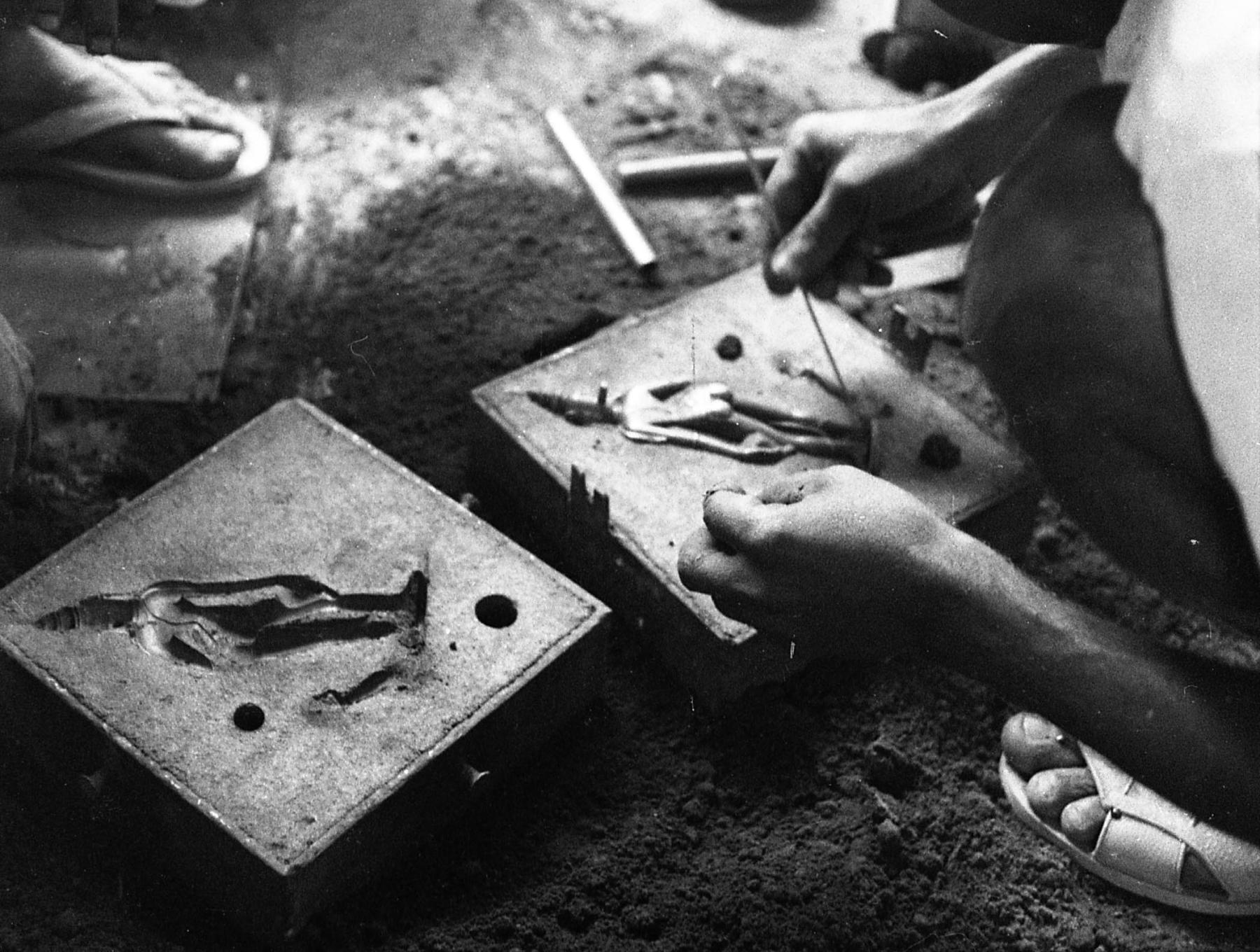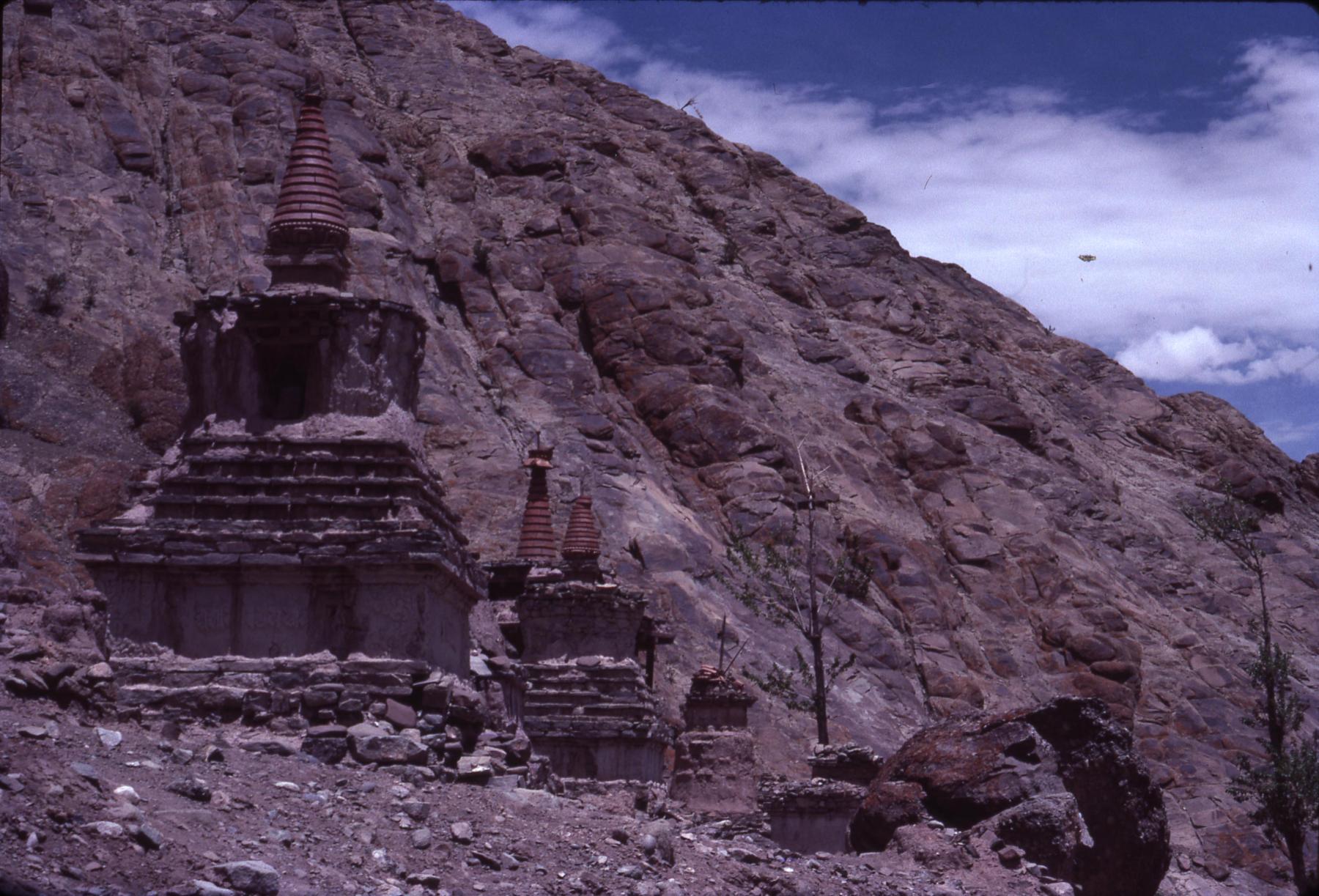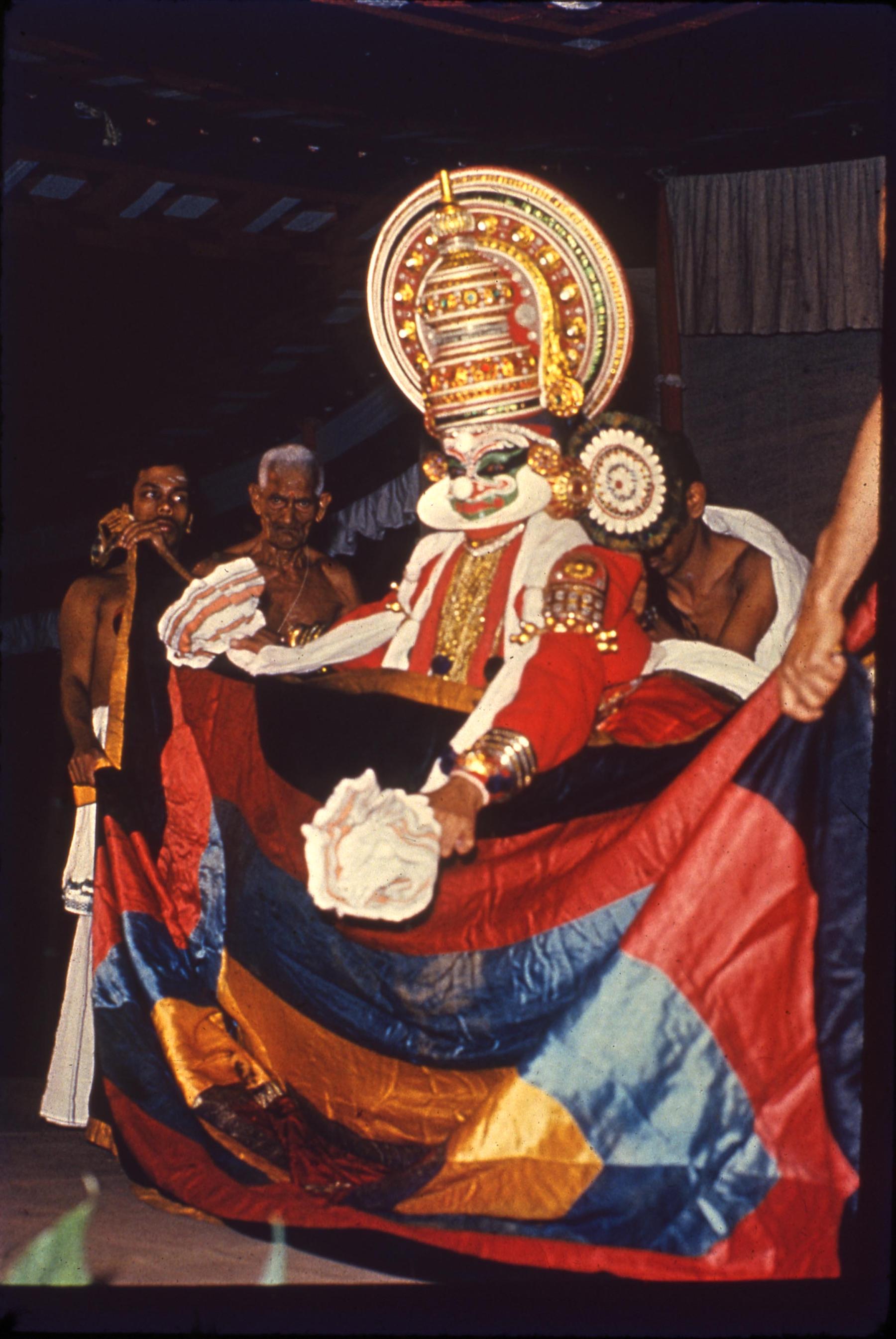“I start with an image…”: On Mrinalini Mukherjee’s Travels as an Artist

Bronze casting workshop at Pottery Studio, Faculty of Fine Arts, Baroda, 1969–1971.
This is the third part of the ongoing series of conversations with Noopur Desai and Pallavi Arora at Asia Art Archive, who organised and digitised the Mrinalini Mukherjee archive.
SB: In an interview manuscript from Mrinalini Mukherjee’s personal archive, on being asked about her working process (which she did not particularly enjoy speaking about), she responded: "I start with an image in mind which could be floral or human. The image suggests the colours, and I then acquire the material, prepare it for dying and start making the armature. I prefer to use a very simple armature, and then add elements as I go along, so that there is scope for improvisation.”
Some of these image-as-starting-points appear to be a section in her archive containing photo documentation from her travels to historical and cultural sites, a majority of which were taken by her husband, Ranjit Singh, under her direction. What do you see in these images?
PA: Her archive revealed that Mukherjee was travelling quite extensively—during the digitisation process, we saw albums from across India, from nearby regions like Bhutan and Southeast Asia, travels to Europe and Australia, and photographs from her travels during her student days at M.S.U. Baroda. What is evident from these images is that she rarely documented herself in the sites, but she captured several formal aspects, which are both architectural and organic. We were aware of Mukherjee’s preoccupation with flora and fauna before we went through her archive, but her interest in architecture and archaeological sites became much clearer for us while going through it.
ND: As a student, Mukherjee trained under K.G. Subramanyan—Gulammohammed Sheikh and Jyoti Bhatt were also teaching in Baroda at that point in time. All of them were deeply invested in the Living Traditions of India project, where they would travel, encourage students to document diverse art and cultural practices, and also invite crafts-persons and artisans to the faculty. In Mukherjee’s archive, you can see that during the formative years of her practice, she visited village fairs and festivals across Gujarat, and there are strips of negatives that run into hundreds from that moment. This sparked something continuous that carried on even when she moved to New Delhi in the 1980s and 1990s.
Angkor Wat, Cambodia, 1996.
Mukherjee also alludes to her fascination with being in art historical spaces in her lecture notes—she felt a sense of awe in these spaces. She frequented temple sites, not for religious reasons but more being drawn to the otherworldly, magnificent sculptural forms and reliefs.
We previously spoke about excess as present in her documentation of Mukherjee’s own work, but in her travels, excess and repetition appear in a very different way. She constantly visited different sites. Quite a few were impromptu trips that she and Ranjit would take in their car—often to inaccessible interiors because of his work as an architect. These can be seen in her photographs from parts of Chhattisgarh, for instance, or of lesser-known temples in Tamil Nadu and Ladakh.

Unknown site, Ladakh, 1984.
Unknown site, Aihole, Hampi, Karnataka, 1987.
She travelled to Australia twice during her participation in the Sydney Biennale and the Asia Pacific Triennial. On her way back, she went to Indonesia, Cambodia, and Thailand. These photographs give us entry points into her encounters and perhaps what she was thinking in terms of her practice.
Unfortunately, there are very few photographs from her travels to Europe, but she was travelling extensively when she exhibited or participated in residences at the Paris Biennale, Modern Art Oxford (formerly known as MoMA in Oxford), at EKWC in the Netherlands, etc. It must have been difficult for her to take photographs of the sites and museums she visited, but she collected several postcards, booklets and brochures. It seems like the postcards became reference images—you see tapestries and textiles of indigenous communities on the one hand, and domes of cathedrals and rock formations in Cappadocia on the other.
Buddhist Complex, Sanchi, Madhya Pradesh.
SB: What’s remarkable is that Mukherjee rarely made connections herself (at least in the archive) between what she saw and the forms of her work. However, seeing the images in the context of her wider practice in the archive, the connections are so much clearer. Her archive provides several visual hints for her process that maybe she didn’t directly articulate, thus providing space for study and even speculation.
In an essay from Mrinalini Mukherjee’s monograph, edited by Shanay Jhaveri, Naman Ahuja focuses on the idea of living traditions, and points out that Mukherjee didn’t actually visit as many “active” temple sites but rather frequented historical ruins. On the one hand, as you both have pointed out, there was a formal study of the sculptures themselves, for example, the form of the apsara, but also the armatures of these structures, the scale and the “elemental” charge of these spaces.
In this context, as archivists and researchers immersed in this collection, why have you framed or considered this section as artistic research?
ND: When we read about Mukherjee’s work, we tend to come across descriptions of an intuitive practice. This is, of course, true in how she engages with the materials, but in her preoccupations with her travels, we can add a layer of referentiality which is not generally emphasised in the art historical frameworks into which she’s generally placed.
Mukherjee carefully annotated this section in the archive, and it’s clear she had organised it for her own reference and to be able to access the image references.
In one of her lecture notes, she talks about different images and forms that she has encountered, including performance forms like Theyyam and Kathakali. This made us think about this section more intensely.
It was important for us to push the idea of what we consider artistic research—how do we read images that artists store and mark in particular ways? How do we find methods to probe the connections between them and their practice in a posthumous archive?
We have been thinking about what documents are taken seriously and constitute artistic research in an archive. Perhaps Mukherjee’s “study” of these sites went beyond mere inspiration from the forms she saw; maybe she was trying to work out some of the effects and questions in her sculptures. However, this is not a framing we want to open up with the circulation of the archive.

Kathakali performance, Kerala.
To read the first two parts of this conversation, click here and here.
All images have been reproduced from the Mrinalini Mukherjee Archive, Asia Art Archive. Photographs: Ranjit Singh and Mrinalini Mukherjee. Courtesy of the Mrinalini Mukherjee Foundation.




